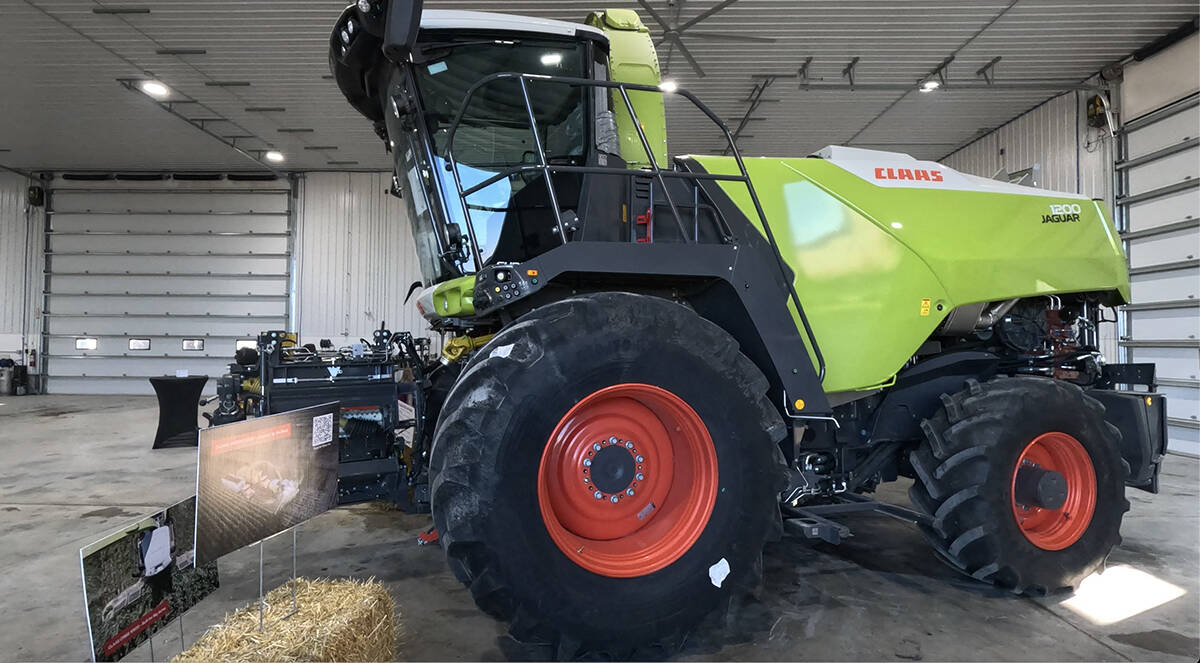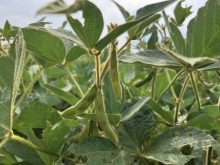Ontario is sporting some good-looking soybean fields this year but ideal environmental conditions before and at flowering mean many lush canopies are hiding white mould.
As described in a July 16 Field Crop News article, Horst Bohner, soybean specialist for the Ontario Ministry of Agriculture, Food and Rural Affairs, said high humidity, high soil moisture and 28 C temperatures characterized much of the province through the last weeks of June and the first half of July.
Why it matters: White mould can quietly sneak into lush soybean canopies and farmers will see the results at harvest with blackened seeds.
Read Also

Claas brings 1000 Series SP forage harvesters to Canada
In mid-August, Claas unveiled its new line of Jaguar forage harvesters at an event in Visalia, California, deep in the heart of that state’s dairy region.
Those conditions were ideal for development of white mould and coincided with significant soybean flowering when plants are susceptible to fungal spores.
Bohner says white mould overwinters in soil and is not spread by wind. Fields with a history of white mould are at greatest risk of an outbreak.
“The inoculum is already present in the field and will take advantage of the weather,” he says.
Province-wide, instances of white mould development are mixed. Marty Vermey, senior agronomist for Grain Farmers of Ontario, says the problem is likely concentrated in the western parts of the province thanks to heavy rain.
Eastern Ontario was comparatively dry in June and July and disease pressure is suspected to be lower.
Fields planted with susceptible varieties, which developed lush stands thanks to abundant moisture and rich soil, are at most risk.
Mitigating white mould risk can involve population reductions to increase airflow between rows. Post-flowering, scouting usually reveals inoculated plants scattered throughout the field. It’s only at harvest, when growers see blackened soybean seeds and gangly plants, that true infection levels are revealed.
“There are things we’ve done to prevent [its development] over years, like lowering seed populations, using wider rows to increase airflow,” says Vermey.
Making rows too wide, however, leaves more opportunity for weeds.
Vermey says fungicides appear to be more popular as well, particularly given higher commodity prices. The opportunity for chemical controls lies exclusively at flowering. Missing the critical early-July period by spraying too late or too early nullifies any advantage fungicides could bring.













